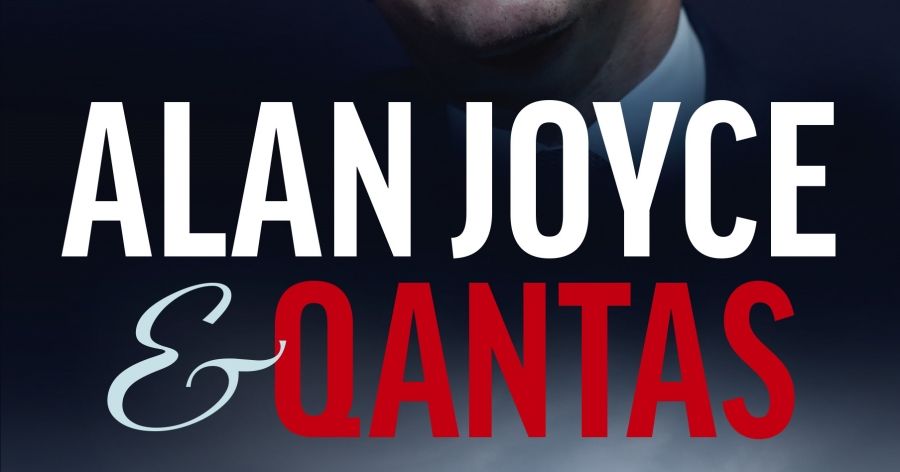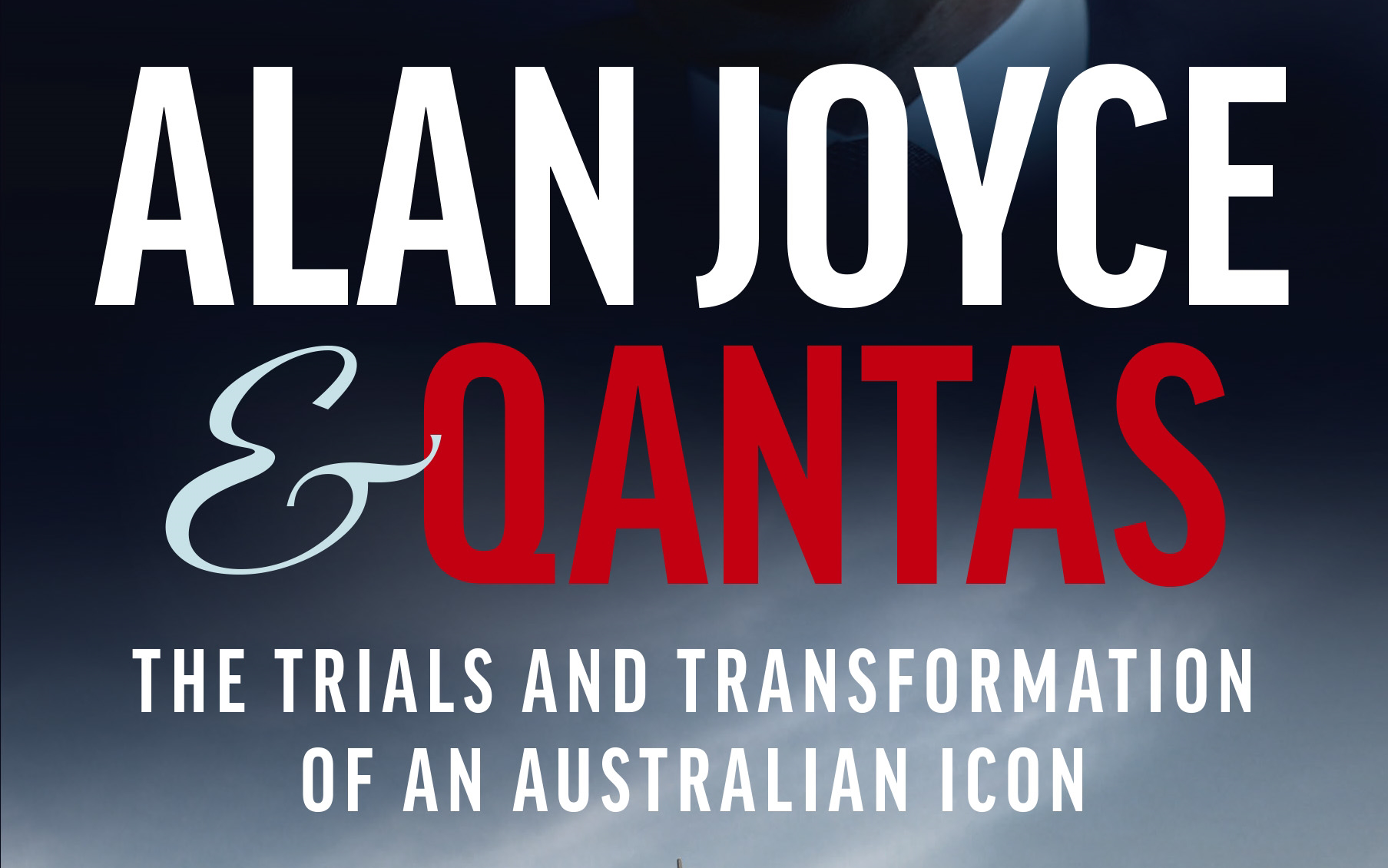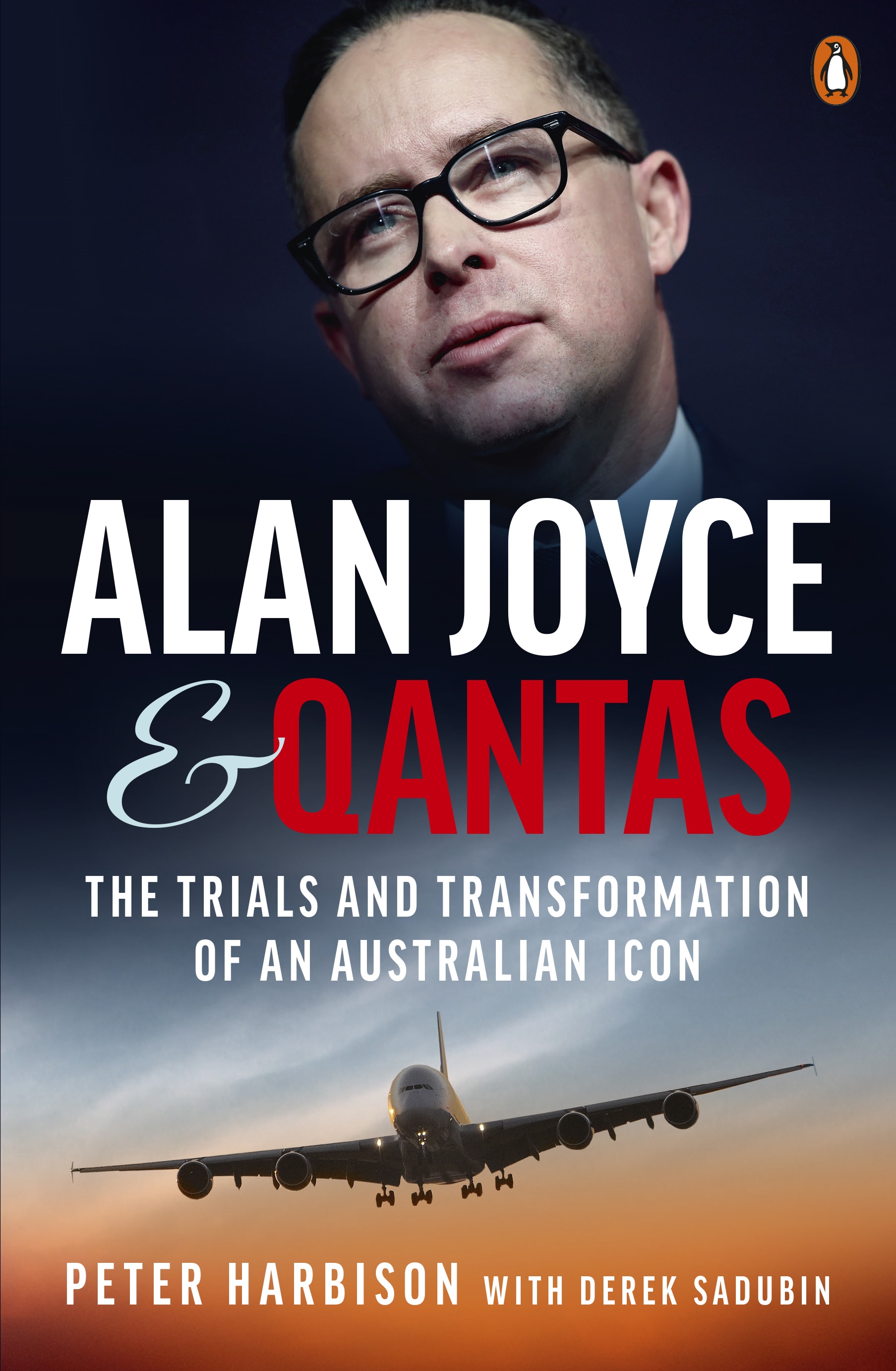
- Free Article: No
- Contents Category: Non-fiction
- Review Article: Yes
- Article Title: Fasten your seatbelts
- Article Subtitle: Turbulent times at Alan Joyce’s Qantas
- Online Only: No
- Custom Highlight Text:
Nearly everyone in Australia has a story about bad airline service, and many of those stories involve Qantas, whose ‘mishandled bag rate’ recently doubled and flight cancellations tripled. The formerly smooth and efficient Sydney-Melbourne run is now a dispiriting ordeal.
- Featured Image (400px * 250px):

- Alt Tag (Featured Image): Stuart Kells reviews ‘Alan Joyce and Qantas: The trials and transformation of an Australian icon’ by Peter Harbison with Derek Sadubin
- Book 1 Title: Alan Joyce and Qantas
- Book 1 Subtitle: The trials and transformation of an Australian icon
- Book 1 Biblio: Penguin, $36.99 pb, 400 pp
- Book 1 Cover Small (400 x 600):

- Book 1 Cover (800 x 1200):

During a 2019 share buy-back, Qantas was criticised for ‘using cash that could have been spent on newer planes and keeping good staff’. The rollercoaster intensified during the pandemic. Just one of many problems: the airline could not get parts such as 787 windscreens and GE engine thermostats, the latter produced by ‘a small company of a father and two sons’. The father died during the pandemic, while his sons left the industry.
In October 2011, the Qantas fleet had been grounded after the airline announced (‘to widespread shock’) that it was locking out employees covered by three principal unions. Further disputation followed. In 2023, the Federal Court determined that Qantas’s efforts to outsource its ground-handling operations contravened the Fair Work Act 2009. ‘This is the largest finding by a country mile,’ TWU national secretary Michael Kaine said, ‘of illegal sacking and outsourcing in Australian corporate history.’
Harbison’s book is as much a biography of Alan Joyce as it is a history of Qantas. A ‘working-class boy from Dublin’, Joyce had contemplated becoming a pilot at Irish carrier Aer Lingus, ‘but his short-sightedness meant he failed the test’. Some people detected in Joyce a ‘heart of gold’, but his rise through the ranks was more about brains. Harbison is candid about how Joyce adopted a technocratic, numbers-driven approach to win the top job at Qantas in 2008.
Harbison’s book helps tell a wider story about corporate Australia. Across sectors as diverse as banking, telcos, insurance, energy, superannuation, retailing, and aviation, the past decade or so has been a period of corporate decline. Lower service standards and less respect for the customer are two aspects of that decline. Hypocrisy is another. Corporate leaders pretended to be champions of commerce, but their success often depended on publicly granted monopolies and other advantages.
That was true at Qantas, whose status as the ‘national carrier’ came with sundry benefits, and where Joyce’s key achievement was to create a low-cost subsidiary, namely Jetstar. (The subsidiary was to be called ‘JetX’ but Joyce’s predecessor reportedly said that sounded ‘like a gas station’.)
The whole idea of a low-cost airline subsidiary is rife with tensions. The subsidiary cannot be too attractive, or it will cannibalise the parent’s market. But the scope for different service standards is limited, because, at bottom, the service is about safe flying. The cost differential between parent and subsidiary is therefore narrow, especially where (as efficiency demands) the subsidiary shares systems with the parent, such as for ticketing and scheduling.
In the United Kingdom, facing competition from Ryanair and easyJet, British Airways experimented with a subsidiary called ‘Go!’. Aer Lingus also created an offshoot: Aer Lingus Express. Both experiments failed, as did similar ventures in North America.
Qantas and Jetstar solved the problem by working hard to remind travellers that flying with Jetstar could be terrible. ‘To stop the cure becoming worse than the disease,’ Joyce said, ‘we coordinated a lot and made sure the brands were very different on the network.’ Hence Jetstar’s pattern of preventable stuff-ups, such as frequently delayed and cancelled flights, and repeated strandings of passengers on distant shores. That strategy, which in economic terms was a departure from efficiency and fundamentally bad for consumers, could only work thanks to a lack of genuine competition in Australian aviation. If we had stronger competition laws and regulators, deliberate inefficiency would be impossible.
Harbison illuminates another dimension of corporate decline: faddish and hubristic decision making. As with dual-brand airlines, corporate Australia’s taste for expensive gimmicks and frolics was only possible because of entry barriers and market power.
Joyce himself had a gimmicky side. He thrived on the attention of reporters who delighted in his endearing pronunciation of ‘third’ as ‘turd’. Qantas’s acquisition of eight A380 super-jumbo jets was another gimmick. ‘These new craft [Harbison writes] – hub-to-hub giants specifically designed to carry over 500 passengers on trunk routes – weren’t needed but just kept on coming.’
Retraining senior pilots to fly the A380s was expensive and time-consuming. Then there was the cost of keeping them in the air: ‘more than US$30,000 an hour in direct operating costs alone, so [the service] had to generate large numbers of economy and premium travellers just to break even.’
The hubristic behemoths were kept in the air by money – and luck. Harbison details a harrowing incident in November 2010 above Batam Island, Indonesia. That morning, Qantas’s first A380 to enter service was flying to London from Sydney; 440 passengers and twenty-nine crew were on board. A faulty oil pipe fractured in an engine, leading to a fire and the fracture of a turbine disc. An uncontained explosion blasted out shrapnel that punctured the wing, severing fuel and hydraulic lines, disabling landing flaps and narrowly missing a fuel-tank. Someone on the ground tweeted a picture of an engine cowling: ‘a large, white aircraft part with a prominent Qantas kangaroo logo lying in a school playground’. Luckily, the aircraft was not lost. The crew made a successful emergency landing in Singapore.
This is the closest Qantas has come to losing a jet aircraft. Joyce recalled that the incident created ‘huge concerns around the brand … But it’s a very robust brand – and we rebounded.’ (Oddly, Joyce referred to Qantas consistently as a ‘brand’, not a company or business.)
Yet another feature of the corporate decline: a surge in executive pay. Joyce was again at the forefront. In 2017, he was the highest-paid executive of all the companies on the ASX200. During his fifteen years as CEO, Joyce received more than $130 million in salary and benefits.
Harbison also traverses the theme of class. At the age of twenty-three, Joyce flew Business Class from Dublin to Chicago. It was his first ever flight and it was a baptism. ‘This was living!’ Harbison writes. ‘He never looked back.’ Joyce’s Qantas claimed to be quintessentially Australian, but it had very unAustralian attributes, such as the ultra-exclusive Chairman’s Lounge, freely and secretively available to influential customers who relished ‘the cocooning effect of complete separation from the masses’.
In 2002, I researched the demise of Ansett Airlines – the biggest corporate collapse in Australian history. I remember the poignant moment when airline models and other artefacts were cleared from the shelves of Ansett’s former headquarters at 501 Swanston Street, Melbourne. More than two decades later, as Harbison’s book shows, the artefacts of corporate Australia need a thorough clear-out.


Comments powered by CComment